| Season Start: | 05 January 1984 | | Season End: | 30 March 1984 | | Season Length: | 13 Weeks | | Writers: | Anthony Steven, Christopher H. Bidmead, Eric Pringle, Eric Saward, Johnny Byrne, Peter Grimwade and Robert Holmes | | Directors: | Fiona Cumming, Graeme Harper, Matthew Robinson, Michael Owen Morris, Pennant Roberts, Peter Moffatt and Ron Jones | | Producer: | John Nathan-Turner | | Script Editor: | Eric Saward | | Visual Effects: | Chris Lawson, Dave Havard, Jim Francis, Mat Irvine, Peter Wragg, Stuart Brisdon and Tony Harding | | Title Sequence: | Sid Sutton | | Title Music: | Ron Grainer and the BBC Radiophonic Workshop. Arranged by Peter Howell |
|
Incarnation of the Doctor: |
The Fifth Doctor (Regenerates) and The Sixth Doctor (Newly Regenerated)
|
| Number of
Companions: |
4 |
| The
Companions: |
Tegan Jovanka (Departs), Turlough (Departs), Kamelion (Dies) and Peri (Joins)
|
| Number of
Acquaintances: |
2
|
| The
Acquaintances: |
Lytton and Sharaz Jek (Joins and Dies)
|
| Number of
Stories: |
7
|
| Number of
Incomplete/Missing Stories: |
0
|
| Number of
Episodes: |
24
|
| Number of
Incomplete/Missing Episodes: |
0
|
| Percentages: |
| Full Stories Held | 100% | | Episodes Held | 100% |
|
| Doctor Who Magazine Poll (1998) | | | Doctor Who Magazine Poll (2009) | | | Doctor Who Magazine Poll (2014) | |
|
| Daleks |
| | The Master |
| | Others |
|
Dalek Troopers (Resurrection of the Daleks), Davros (Resurrection of the Daleks), Gravis (Frontios), Lytton (Resurrection of the Daleks), Mestor (The Twin Dilemma), Morgus (The Caves of Androzani), Myrka (Warriors of the Deep), Sea Devils (Warriors of the Deep), Silurians (Warriors of the Deep), Sir George Hutchinson (The Awakening), Stien (Resurrection of the Daleks), Stotz (The Caves of Androzani), The Malus (The Awakening) and Tractators (Frontios) |
|
 'You are soft, like all Time Lords. You prefer to stand and watch. Action requires courage. Something you lack.' 'You are soft, like all Time Lords. You prefer to stand and watch. Action requires courage. Something you lack.'
Davros
(Resurrection of the Daleks) |
|
|
|
|
| |
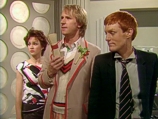 |
| Tegan and Turlough with the Fifth Doctor |
|
 By the time the first story of Season Twenty One was broadcast it had already been announced that both Peter Davison (the Fifth Doctor) and Janet Fielding (his travelling companion Tegan Jovanka) had decided to leave the show before the season ended. This season was also the last for both Vislor Turlough (played by Mark Strikson) and Kamelion (voiced by Graham Flood). By the time the first story of Season Twenty One was broadcast it had already been announced that both Peter Davison (the Fifth Doctor) and Janet Fielding (his travelling companion Tegan Jovanka) had decided to leave the show before the season ended. This season was also the last for both Vislor Turlough (played by Mark Strikson) and Kamelion (voiced by Graham Flood).
 This meant that Season Twenty One is seen to be one of that has huge changes with regards to the regular cast. Even though, as the season started, the knowledge that the Fifth Doctor’s era was about to come to an end no details on who was to replace Peter Davison - and so become the Sixth Doctor - had been revealed. This therefore triggered the newspapers at the time to speculate as to who would take over this high-profile role with Brian Blessed in particular proving to be a popular candidate. There was even speculation that The Doctor could even change gender... This meant that Season Twenty One is seen to be one of that has huge changes with regards to the regular cast. Even though, as the season started, the knowledge that the Fifth Doctor’s era was about to come to an end no details on who was to replace Peter Davison - and so become the Sixth Doctor - had been revealed. This therefore triggered the newspapers at the time to speculate as to who would take over this high-profile role with Brian Blessed in particular proving to be a popular candidate. There was even speculation that The Doctor could even change gender...
 That aside, Season Twenty One carried on where the previous season left off. The first story "Warriors of the Deep" had the welcome, and for many the long overdue, return of both the Silurians and the Sea Devils - The first time that both had appeared in a story together. Their inclusion in this story was to address the fact that no story in Season Twenty had included a monster. It was therefore decided that Season Twenty One would be considered to be a new 'monster' season. That aside, Season Twenty One carried on where the previous season left off. The first story "Warriors of the Deep" had the welcome, and for many the long overdue, return of both the Silurians and the Sea Devils - The first time that both had appeared in a story together. Their inclusion in this story was to address the fact that no story in Season Twenty had included a monster. It was therefore decided that Season Twenty One would be considered to be a new 'monster' season.
 Other monsters seen during this season include the return of Davros and the Daleks ("Resurrection of the Daleks") and the introduction of new monsters: the Malus ("The Awakening"), Tractators ("Frontios") and Gastropods ("The Twin Dilemma"). This season also included another story with The Master ("Planet of Fire") and new villain Sharaz Jek ("The Caves of Androzani"). Other monsters seen during this season include the return of Davros and the Daleks ("Resurrection of the Daleks") and the introduction of new monsters: the Malus ("The Awakening"), Tractators ("Frontios") and Gastropods ("The Twin Dilemma"). This season also included another story with The Master ("Planet of Fire") and new villain Sharaz Jek ("The Caves of Androzani").
 As had been the case for the past two years, the show was broadcast twice weekly, but for this season the episodes were shifted to Thursday and Friday nights instead of Tuesdays and Wednesdays. The only exception to this was "Resurrection of the Daleks" which, although it was written and recorded as four standard length episodes, this story was re-edited before transmission into two double-length episodes in order to free up two of the transmission slots originally allocated to Doctor Who so that they could be used for additional coverage of the winter Olympics. To prevent the show having to go on a hiatus for two weeks John Nathan-Turner sought agreement to broadcast the story as two forty-five minute episodes on consecutive Wednesdays. As had been the case for the past two years, the show was broadcast twice weekly, but for this season the episodes were shifted to Thursday and Friday nights instead of Tuesdays and Wednesdays. The only exception to this was "Resurrection of the Daleks" which, although it was written and recorded as four standard length episodes, this story was re-edited before transmission into two double-length episodes in order to free up two of the transmission slots originally allocated to Doctor Who so that they could be used for additional coverage of the winter Olympics. To prevent the show having to go on a hiatus for two weeks John Nathan-Turner sought agreement to broadcast the story as two forty-five minute episodes on consecutive Wednesdays.
 Behind the cameras the main production team remained the same with Producer John Nathan-Turner and Script Editor Eric Saward both remaining at the helm for the whole season. The writers and directors employed for most of the stories were those who had worked on the show before and mainly stories from the previous couple of seasons. Amongst the writers was former Script Editor Robert Holmes – writing his first Doctor Who story since the 1978 Fourth Doctor story "The Power of Kroll". The only really upset of the season was once again certain stories suffered due to industrial action within the BBC. But thankfully none this time had to be cancelled or postponed to a later season. Behind the cameras the main production team remained the same with Producer John Nathan-Turner and Script Editor Eric Saward both remaining at the helm for the whole season. The writers and directors employed for most of the stories were those who had worked on the show before and mainly stories from the previous couple of seasons. Amongst the writers was former Script Editor Robert Holmes – writing his first Doctor Who story since the 1978 Fourth Doctor story "The Power of Kroll". The only really upset of the season was once again certain stories suffered due to industrial action within the BBC. But thankfully none this time had to be cancelled or postponed to a later season.
 As to the regular cast changes, so as to prevent multiple departures in any story during this season it was decided that Tegan would leave at the end of "Resurrection of the Daleks". Turlough would then leave in the next story, "Planet of Fire", and Peter Davison in "The Caves of Androzani". This was Tegan’s second departure from the TARDIS (the first being at the end of the 1982 story "Time-Flight") but this time it would be for good as she has become tired of all the death and no longer enjoys her adventures in the TARDIS. For Turlough’s departure we finally get to learn of Turlough’s history and why he was in a public school on Earth – to be invited to join the TARDIS, by The Doctor, in last season’s "Mawdryn Undead". Ironically Peter Grimwade, who was tasked with writing Turlough’s final story, had also written Turlough’s first adventure. As to the regular cast changes, so as to prevent multiple departures in any story during this season it was decided that Tegan would leave at the end of "Resurrection of the Daleks". Turlough would then leave in the next story, "Planet of Fire", and Peter Davison in "The Caves of Androzani". This was Tegan’s second departure from the TARDIS (the first being at the end of the 1982 story "Time-Flight") but this time it would be for good as she has become tired of all the death and no longer enjoys her adventures in the TARDIS. For Turlough’s departure we finally get to learn of Turlough’s history and why he was in a public school on Earth – to be invited to join the TARDIS, by The Doctor, in last season’s "Mawdryn Undead". Ironically Peter Grimwade, who was tasked with writing Turlough’s final story, had also written Turlough’s first adventure.
 It was also decided that there was a need to write Kamelion out of the show and to introduce a new companion. "Planet of Fire" was chosen for both. Kamelion’s departure in this story was due to huge problems encountered with its operation. John Nathan-Turner also wanted this character to depart before the end of the Fifth Doctor’s era. This is the first time, since he had joined the TARDIS crew in last season’s "The King's Demons", that he had been seen. Since then he had gone essentially unused. Kamelion’s ‘death’ makes him the fourth companion to die while travelling with The Doctor. It was also decided that there was a need to write Kamelion out of the show and to introduce a new companion. "Planet of Fire" was chosen for both. Kamelion’s departure in this story was due to huge problems encountered with its operation. John Nathan-Turner also wanted this character to depart before the end of the Fifth Doctor’s era. This is the first time, since he had joined the TARDIS crew in last season’s "The King's Demons", that he had been seen. Since then he had gone essentially unused. Kamelion’s ‘death’ makes him the fourth companion to die while travelling with The Doctor.
 Joining the Fifth Doctor, in "Planet of Fire", the American botany student Perpugilliam 'Peri' Brown (played by Nicola Bryant). The introduction of Peri came about when it was decided to replace both Tegan and Turlough with just one companion and so revert back to the less-crowded one-companion arrangement which had prevailed through much of the Seventies. Therefore with the departure of Turlough at the end of this story along with the demise of Kamelion, The Doctor would once again (for the first time since the 1977 Fourth Doctor story "Horror of Fang Rock") be travelling with only one companion. Joining the Fifth Doctor, in "Planet of Fire", the American botany student Perpugilliam 'Peri' Brown (played by Nicola Bryant). The introduction of Peri came about when it was decided to replace both Tegan and Turlough with just one companion and so revert back to the less-crowded one-companion arrangement which had prevailed through much of the Seventies. Therefore with the departure of Turlough at the end of this story along with the demise of Kamelion, The Doctor would once again (for the first time since the 1977 Fourth Doctor story "Horror of Fang Rock") be travelling with only one companion.
 Peter Davison’s last story was "The Caves of Androzani" and so this season was his third, and final, in the title role. His final story was specially written as a regeneration story to air as the penultimate story of this season. Peter Davison decided to leave as he was wary of typecasting, and had been advised by former Second Doctor, Patrick Troughton, that three years in the role should be his limit. Peter Davison’s last story was "The Caves of Androzani" and so this season was his third, and final, in the title role. His final story was specially written as a regeneration story to air as the penultimate story of this season. Peter Davison decided to leave as he was wary of typecasting, and had been advised by former Second Doctor, Patrick Troughton, that three years in the role should be his limit.
 Therefore the regeneration sequence, which was broadcast at the conclusion of "The Caves of Androzani" on the 16th March 1984, brought Peter Davison’s time on Doctor Who to an end. But this was not the end of this season as Producer John Nathan-Turner had decided to have Peter Davison exit in this season’s penultimate story, the idea being to give the audience a chance to experience the new Doctor before the long break between seasons. This would just be the second time that a regeneration had occurred mid-season (the other being during Season Four - the very first change of lead actor, from William Hartnell to Patrick Troughton, in the 1966 story "The Tenth Planet"). Therefore the regeneration sequence, which was broadcast at the conclusion of "The Caves of Androzani" on the 16th March 1984, brought Peter Davison’s time on Doctor Who to an end. But this was not the end of this season as Producer John Nathan-Turner had decided to have Peter Davison exit in this season’s penultimate story, the idea being to give the audience a chance to experience the new Doctor before the long break between seasons. This would just be the second time that a regeneration had occurred mid-season (the other being during Season Four - the very first change of lead actor, from William Hartnell to Patrick Troughton, in the 1966 story "The Tenth Planet").
 Peter Davison has stayed a popular figure and has appeared in many Doctor Who conventions. He has though continued his prolific career after leaving Doctor Who, including appearing in a feature film and many television programmes - including a new series of All Creatures Great and Small. Peter Davison returned, in 1993, to play the Fifth Doctor for the Thirtieth-Anniversary Children In Need special "Dimensions in Time", narrated two novelisations of his stories for release as audio tapes, hosted the video special "Daleks - The Early Years", recorded the unreleased "The Davison Years" special, and appeared on many Big Finish Productions Doctor Who audio stories - which has reunited him with former companions Mark Strickson (Turlough), Sarah Sutton (Nyssa) and Nicola Bryant (Peri), as well as a new companion (Erimem) played by Caroline Morris. In October 2007 he even returned to the show to record a scene, alongside the Tenth Doctor, for the Children In Need special story "Time Crash". Peter Davison has stayed a popular figure and has appeared in many Doctor Who conventions. He has though continued his prolific career after leaving Doctor Who, including appearing in a feature film and many television programmes - including a new series of All Creatures Great and Small. Peter Davison returned, in 1993, to play the Fifth Doctor for the Thirtieth-Anniversary Children In Need special "Dimensions in Time", narrated two novelisations of his stories for release as audio tapes, hosted the video special "Daleks - The Early Years", recorded the unreleased "The Davison Years" special, and appeared on many Big Finish Productions Doctor Who audio stories - which has reunited him with former companions Mark Strickson (Turlough), Sarah Sutton (Nyssa) and Nicola Bryant (Peri), as well as a new companion (Erimem) played by Caroline Morris. In October 2007 he even returned to the show to record a scene, alongside the Tenth Doctor, for the Children In Need special story "Time Crash".
 It has though since been revealed that by the time he recorded his final story Peter Davison had started to regret his choice to leave, having enjoyed many of his scripts for Season Twenty One and especially for his final story. It has though since been revealed that by the time he recorded his final story Peter Davison had started to regret his choice to leave, having enjoyed many of his scripts for Season Twenty One and especially for his final story.
 With Peter Davison leaving in the penultimate story this meant that for the final story, "The Twin Dilemma", Colin Baker is seen taking over the lead role. Unlike the situation he had encountered in 1980 John Nathan-Turner’s search for a new Doctor was not lengthy. Colin Baker, who had played the part of Commander Maxil in "Arc of Infinity" at the start of the previous season, had impressed the show’s producer. Therefore Colin Baker was offered the role the Sixth Doctor, to which he readily agreed. With Peter Davison leaving in the penultimate story this meant that for the final story, "The Twin Dilemma", Colin Baker is seen taking over the lead role. Unlike the situation he had encountered in 1980 John Nathan-Turner’s search for a new Doctor was not lengthy. Colin Baker, who had played the part of Commander Maxil in "Arc of Infinity" at the start of the previous season, had impressed the show’s producer. Therefore Colin Baker was offered the role the Sixth Doctor, to which he readily agreed.
 Unfortunately, the first story for the Sixth Doctor, and the last for this season, is not highly regarded, and is commonly considered to be the worst story in the whole history of the show. This is a shame as it contains some electrifying, if all-be-it controversial, scenes between Colin Baker and Nicola Bryant. But this story was let down by an undeniably poor script and totally un-engaging storyline. Unfortunately, the first story for the Sixth Doctor, and the last for this season, is not highly regarded, and is commonly considered to be the worst story in the whole history of the show. This is a shame as it contains some electrifying, if all-be-it controversial, scenes between Colin Baker and Nicola Bryant. But this story was let down by an undeniably poor script and totally un-engaging storyline.
 And so what should have been a really good end to the season, and a fresh start for the Sixth Doctor, turned out to be the exact opposite. Russell T Davies, the first Executive Producer of the revived show, has even commented that this story was ‘the beginning of the end’ of the original run of the show. Unfortunately, there were those at the time that also felt that Doctor Who’s days were numbered. And as history would soon prove they were right… And so what should have been a really good end to the season, and a fresh start for the Sixth Doctor, turned out to be the exact opposite. Russell T Davies, the first Executive Producer of the revived show, has even commented that this story was ‘the beginning of the end’ of the original run of the show. Unfortunately, there were those at the time that also felt that Doctor Who’s days were numbered. And as history would soon prove they were right…
 For three years, Peter Davison had taken the role of The Doctor and had made it his own... an altogether different sort of Doctor from his predecessor. More apt to solving problems with diplomacy rather than running headstrong into the action. This younger looking incarnation of The Doctor blended the scientific mind of the Third Doctor with the youthful enthusiasm of the Second Doctor. Indeed, at the onset of his run he was quite the ‘youngster’ while by his final story, "The Caves of Androzani", he was far more mature. Enthusiastic and spritely, this Doctor demonstrated a notably more fallible outlook than in the past. Yes he made mistakes, and sometimes the cost of these errors was very high indeed. The years were beginning to tell upon the Fifth Doctor, as they had during the latter days of his fourth incarnation. He was a being who had seen and endured much, both good and bad. Despite his boyish appearance, there could be little doubt that the Fifth Doctor was a person of great experience in dealing with all that was bad in the Universe as well as seeing the good. A mantle that would be continued by the Sixth Doctor in the next season. For three years, Peter Davison had taken the role of The Doctor and had made it his own... an altogether different sort of Doctor from his predecessor. More apt to solving problems with diplomacy rather than running headstrong into the action. This younger looking incarnation of The Doctor blended the scientific mind of the Third Doctor with the youthful enthusiasm of the Second Doctor. Indeed, at the onset of his run he was quite the ‘youngster’ while by his final story, "The Caves of Androzani", he was far more mature. Enthusiastic and spritely, this Doctor demonstrated a notably more fallible outlook than in the past. Yes he made mistakes, and sometimes the cost of these errors was very high indeed. The years were beginning to tell upon the Fifth Doctor, as they had during the latter days of his fourth incarnation. He was a being who had seen and endured much, both good and bad. Despite his boyish appearance, there could be little doubt that the Fifth Doctor was a person of great experience in dealing with all that was bad in the Universe as well as seeing the good. A mantle that would be continued by the Sixth Doctor in the next season.
|
|
|
 |
| The Fifth Doctor |
|
 The long-awaited return of the Silurians and the Sea Devils, both of whom had not been seen since the Third Doctor’s era in the early 1970’s occurred in "Warriors of the Deep" - the story that started this season off. Before this story the Silurians and the Sea Devils had only been seen separately. But in "Warriors of the Deep", and for the only time in the shows history, to-date, both were seen together in their attempts to trigger two opposing superpowers, who are facing off against one another with their respective arsenals of nuclear weapons poised to fire, to annihilate each other so that the Silurians and the Sea Devils can rule the Earth once more. The two things that really let this story down though were the Myrka and the rather predictable ending. The long-awaited return of the Silurians and the Sea Devils, both of whom had not been seen since the Third Doctor’s era in the early 1970’s occurred in "Warriors of the Deep" - the story that started this season off. Before this story the Silurians and the Sea Devils had only been seen separately. But in "Warriors of the Deep", and for the only time in the shows history, to-date, both were seen together in their attempts to trigger two opposing superpowers, who are facing off against one another with their respective arsenals of nuclear weapons poised to fire, to annihilate each other so that the Silurians and the Sea Devils can rule the Earth once more. The two things that really let this story down though were the Myrka and the rather predictable ending.
 This season also sees the return of the dreaded Daleks along with Davros, their evil creator, in a story which at times had you at the edge of your seat - from the hunt for the Dalek creature in the warehouse to the confrontation between The Doctor and Davros. And then there is the climactic battle and apparent demise of Davros. Some have said that "Resurrection of the Daleks" did for the Daleks what "Earthshock" did for the Cybermen. This story certainly updates the concept of the Daleks as well as introducing some new aspects to these evil creatures. This story also introduces the character of Lytton who may be on the side of the Daleks, and so is seen as a villain, in this story but as time would tell he would soon redeem himself when his and The Doctor’s paths cross again in the following season. This season also sees the return of the dreaded Daleks along with Davros, their evil creator, in a story which at times had you at the edge of your seat - from the hunt for the Dalek creature in the warehouse to the confrontation between The Doctor and Davros. And then there is the climactic battle and apparent demise of Davros. Some have said that "Resurrection of the Daleks" did for the Daleks what "Earthshock" did for the Cybermen. This story certainly updates the concept of the Daleks as well as introducing some new aspects to these evil creatures. This story also introduces the character of Lytton who may be on the side of the Daleks, and so is seen as a villain, in this story but as time would tell he would soon redeem himself when his and The Doctor’s paths cross again in the following season.
 Of all the things to watch out for during this season one can not ignore the introduction to the TARDIS, in "Planet of Fire", of American botany student Perpugilliam "Peri" Brown. Nicola Bryant makes a good debut as Peri, helped of course by wearing a bikini and having to be rescued from the sea by a rather heroic Turlough. Filmed in Lanzarote, in the Canary Islands this is the third time that a Doctor Who story was filmed abroad. As well as introducing Peri this story also sees the return again of The Master, and as well as the departure of Turlough, the demise of Kamelion. But it is the ending of this story that stands out with The Doctor refusing to help the trapped Master, leading to what would appear to be his final demise. At the time viewers must have thought that this can’t be the end of The Doctor’s arch-enemy? Of all the things to watch out for during this season one can not ignore the introduction to the TARDIS, in "Planet of Fire", of American botany student Perpugilliam "Peri" Brown. Nicola Bryant makes a good debut as Peri, helped of course by wearing a bikini and having to be rescued from the sea by a rather heroic Turlough. Filmed in Lanzarote, in the Canary Islands this is the third time that a Doctor Who story was filmed abroad. As well as introducing Peri this story also sees the return again of The Master, and as well as the departure of Turlough, the demise of Kamelion. But it is the ending of this story that stands out with The Doctor refusing to help the trapped Master, leading to what would appear to be his final demise. At the time viewers must have thought that this can’t be the end of The Doctor’s arch-enemy?
 Of the new monsters and villains The Doctor has had to face this season the first he encountered was the Malus in "The Awakening". This is a very enjoyable story and considering that this story is only a two-part adventure there is an awful lot packed into it. Whilst the script obviously had its roots in the 1971 Third Doctor story "The Dæmons", this story had plenty of new ideas, even if the concept of the Malus in the church was not as frightening or plausible as it could have been. But the idea of the threat to the village being an alien war machine was a nice twist and was very affective. As was the smaller Malus projection that manifests itself on a number of occasions, including at one point clinging to the interior wall of the TARDIS - creepy... Of the new monsters and villains The Doctor has had to face this season the first he encountered was the Malus in "The Awakening". This is a very enjoyable story and considering that this story is only a two-part adventure there is an awful lot packed into it. Whilst the script obviously had its roots in the 1971 Third Doctor story "The Dæmons", this story had plenty of new ideas, even if the concept of the Malus in the church was not as frightening or plausible as it could have been. But the idea of the threat to the village being an alien war machine was a nice twist and was very affective. As was the smaller Malus projection that manifests itself on a number of occasions, including at one point clinging to the interior wall of the TARDIS - creepy...
 Undoubtedly the story to watch is "The Caves of Androzani". This story revolves around the characters of Sharaz Jek and Morgus, two people diametrically opposed to each other in every way. Initially it seems that perhaps Sharaz Jek is the villain, and yet Morgus is far more calculating and cold, and it appears that the former has been driven insane by the perceived duplicity of the latter and by his subsequent enforced exile. It is clear that the casting of these two roles was key to the success of this story. As is the fantastic regeneration sequence at the end – undoubtedly the one of the best regeneration sequences. This is then followed by one of the most memorable of introduction scenes for a new Doctor as in three curt lines the Sixth Doctor gives a strong indication of his new personality. One is though left feeling for poor Peri who has only just started to get used to being in The TARDIS and being with the Fifth Doctor. But as we now know worst was still to come… Undoubtedly the story to watch is "The Caves of Androzani". This story revolves around the characters of Sharaz Jek and Morgus, two people diametrically opposed to each other in every way. Initially it seems that perhaps Sharaz Jek is the villain, and yet Morgus is far more calculating and cold, and it appears that the former has been driven insane by the perceived duplicity of the latter and by his subsequent enforced exile. It is clear that the casting of these two roles was key to the success of this story. As is the fantastic regeneration sequence at the end – undoubtedly the one of the best regeneration sequences. This is then followed by one of the most memorable of introduction scenes for a new Doctor as in three curt lines the Sixth Doctor gives a strong indication of his new personality. One is though left feeling for poor Peri who has only just started to get used to being in The TARDIS and being with the Fifth Doctor. But as we now know worst was still to come…
 "The Caves of Androzani" is certainly one of the best Doctor Who stories ever made, if not the best. It is one of those rare cases of a production in which everything - scripting, direction, casting, acting, design, music and effects - seems to have come together perfectly, leading to a story that for many fans is as close to perfection as the show ever got. Its unique place in Doctor Who mythology is rightly deserved. "The Caves of Androzani" is certainly one of the best Doctor Who stories ever made, if not the best. It is one of those rare cases of a production in which everything - scripting, direction, casting, acting, design, music and effects - seems to have come together perfectly, leading to a story that for many fans is as close to perfection as the show ever got. Its unique place in Doctor Who mythology is rightly deserved.
|
|
|
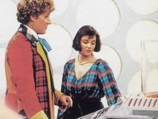 |
| The Sixth Doctor and Peri |
|
 Like the previous season viewing figures were fairly constant amongst the seven stories with the average viewing figures being exactly the same. And again if you go by the viewing figures no story stands out as being the far worst or best story. "Frontios" received the lowest viewers (6.8 million) while "The Caves of Androzani" received (possible as expected) the highest (7.6 million). But the difference between the two stories, like with those for the previous season, is less than 1 million. Surprisingly "The Twin Dilemma" faired reasonable well (at 7.1 million). However, it is in the Doctor Who Magazine poll carried out in 1998 that this story came second to last. But then in 2009 Doctor Who Magazine poll this story had the accolade of being voted as the worst story of the 200 stories made up until that time. As already stated this story was not the best of starts for the Sixth Doctor. Like the previous season viewing figures were fairly constant amongst the seven stories with the average viewing figures being exactly the same. And again if you go by the viewing figures no story stands out as being the far worst or best story. "Frontios" received the lowest viewers (6.8 million) while "The Caves of Androzani" received (possible as expected) the highest (7.6 million). But the difference between the two stories, like with those for the previous season, is less than 1 million. Surprisingly "The Twin Dilemma" faired reasonable well (at 7.1 million). However, it is in the Doctor Who Magazine poll carried out in 1998 that this story came second to last. But then in 2009 Doctor Who Magazine poll this story had the accolade of being voted as the worst story of the 200 stories made up until that time. As already stated this story was not the best of starts for the Sixth Doctor.
 For many both "Frontios" and "The Twin Dilemma" are considered to be the worst stories. In the former the gravity-controlling Tractators where inspired by wood lice and the desolate, Blitz-like setting was influenced by reports of fighting in Beirut at the time. However, the concept in this story of the colonists being sucked down to their death is rather eerie. This story attempted to be rather different from the normal Doctor Who story. It may paint a detailed picture of the last remnants of Earth’s civilisation, marooned on Frontios after a mysterious crash, being bombarded by meteorites from above and something strange below ground. Unfortunately, once the main action takes place below the surface that this story falls apart. The Tractators looked rather silly being far too bulky and inflexible and it must be said that the sub-plot about the TARDIS’s apparent destruction doesn’t really work. For many both "Frontios" and "The Twin Dilemma" are considered to be the worst stories. In the former the gravity-controlling Tractators where inspired by wood lice and the desolate, Blitz-like setting was influenced by reports of fighting in Beirut at the time. However, the concept in this story of the colonists being sucked down to their death is rather eerie. This story attempted to be rather different from the normal Doctor Who story. It may paint a detailed picture of the last remnants of Earth’s civilisation, marooned on Frontios after a mysterious crash, being bombarded by meteorites from above and something strange below ground. Unfortunately, once the main action takes place below the surface that this story falls apart. The Tractators looked rather silly being far too bulky and inflexible and it must be said that the sub-plot about the TARDIS’s apparent destruction doesn’t really work.
 But it is "The Twin Dilemma" that proved to be the most disappointing especially as it is the introductory story of a new incarnation of The Doctor. When developing the character of the Sixth Doctor as usual, a contrast was desired with the previous incarnation, and so it was decided to make the new Doctor very unpredictable and argumentative. Colin Baker was keen to make viewers initially suspicious of this incarnation of The Doctor, but who would gradually earn their trust over the course of his time on the programme. But it is "The Twin Dilemma" that proved to be the most disappointing especially as it is the introductory story of a new incarnation of The Doctor. When developing the character of the Sixth Doctor as usual, a contrast was desired with the previous incarnation, and so it was decided to make the new Doctor very unpredictable and argumentative. Colin Baker was keen to make viewers initially suspicious of this incarnation of The Doctor, but who would gradually earn their trust over the course of his time on the programme.
 But the idea of having The Doctor being unusually violent at the start of this story to the point of even attempting to strangle Peri was for many a step to far. One can imagine viewers at the time switching off in droves at this point, having become completely disillusioned with the show. But the idea of having The Doctor being unusually violent at the start of this story to the point of even attempting to strangle Peri was for many a step to far. One can imagine viewers at the time switching off in droves at this point, having become completely disillusioned with the show.
 Another major problem with this story was it was the first time we get to see what can only be described as the most horrendous costume that The Doctor has been required to wear. His multi-coloured outfit has the unfortunate effect of precluding any possibility of The Doctor entering unobtrusively into a situation or being anything other than the centre of attention. And unfortunately this is exactly what happens in "The Twin Dilemma". Yes it can be argued that this story contains some electrifying scenes between Colin Baker and Nicola Bryant. But one has to agree that the Sixth Doctor’s era had a truly dreadful start with a story that is at times almost painful to watch. Another major problem with this story was it was the first time we get to see what can only be described as the most horrendous costume that The Doctor has been required to wear. His multi-coloured outfit has the unfortunate effect of precluding any possibility of The Doctor entering unobtrusively into a situation or being anything other than the centre of attention. And unfortunately this is exactly what happens in "The Twin Dilemma". Yes it can be argued that this story contains some electrifying scenes between Colin Baker and Nicola Bryant. But one has to agree that the Sixth Doctor’s era had a truly dreadful start with a story that is at times almost painful to watch.
 Ironically it is the story that preceded "The Twin Dilemma" that stands out as being the best story of this season. Despite only joining the TARDIS in the preceding story, "Planet of Fire", the relationship between The Doctor and his new companion Peri, in "The Caves of Androzani" was something special. What a shame it did not last. The final scenes where the Fifth Doctor sacrifices himself to cure Peri is very heart wrenching moment in the show. Ironically it is the story that preceded "The Twin Dilemma" that stands out as being the best story of this season. Despite only joining the TARDIS in the preceding story, "Planet of Fire", the relationship between The Doctor and his new companion Peri, in "The Caves of Androzani" was something special. What a shame it did not last. The final scenes where the Fifth Doctor sacrifices himself to cure Peri is very heart wrenching moment in the show.
 Many fans have claimed that "The Caves of Androzani" is the best story made since John Nathan-Turner took over the reigns of Producer and who can argue with them. Having been voted the third favourite story in the Doctor Who Magazine poll, carried out in 1998 and then coming first in the 2009 Doctor Who Magazine poll says it all. Many fans have claimed that "The Caves of Androzani" is the best story made since John Nathan-Turner took over the reigns of Producer and who can argue with them. Having been voted the third favourite story in the Doctor Who Magazine poll, carried out in 1998 and then coming first in the 2009 Doctor Who Magazine poll says it all.
 What a contrast there is between these two stories. And what a mountain the Sixth Doctor had to climb if he was to stand a chance of winning back viewers to the show. What a contrast there is between these two stories. And what a mountain the Sixth Doctor had to climb if he was to stand a chance of winning back viewers to the show.
|
|
|
|
|
| |
The Firsts:
 The first appearance of the Silurians for 14 years - since the 1970 Third Doctor story "Doctor Who and the Silurians". (Warriors of the Deep) The first appearance of the Silurians for 14 years - since the 1970 Third Doctor story "Doctor Who and the Silurians". (Warriors of the Deep)
 The first appearance of the Sea Devils for 12 years - since the 1972 Third Doctor story "The Sea Devils". (Warriors of the Deep) The first appearance of the Sea Devils for 12 years - since the 1972 Third Doctor story "The Sea Devils". (Warriors of the Deep)
 The first Doctor Who story with 45-minute episodes. (Resurrection of the Daleks) The first Doctor Who story with 45-minute episodes. (Resurrection of the Daleks)
 The introduction of companion Peri played by Nicola Bryant. (Planet of Fire) The introduction of companion Peri played by Nicola Bryant. (Planet of Fire)
 The first, and only story, in the Fifth Doctor’s era in which Janet Fielding made no appearance as Tegan. (Planet of Fire) The first, and only story, in the Fifth Doctor’s era in which Janet Fielding made no appearance as Tegan. (Planet of Fire)
 Colin Baker's first appearance as the Sixth Doctor. (The Caves of Androzani) Colin Baker's first appearance as the Sixth Doctor. (The Caves of Androzani)
 Colin Baker's first full story as the Sixth Doctor. (The Twin Dilemma) Colin Baker's first full story as the Sixth Doctor. (The Twin Dilemma)
|
| |
The Lasts (Subject to Future Stories):
| |
| Doctor Who CMS Magazine (In Vision) | Issue 78: Season 21 Overview - (Released: July 1998) | | Doctor Who Magazine - Episode Guide | Issue 120 - (Released: January 1987) | | Doctor Who Magazine - Episode Guide | Issue 159 - (Released: April 1990) | | Doctor Who Magazine - Countdown to 50 | Issue 451 - (Released: October 2012) |
|
|
| |
The Doctor and Companions/Acquaintances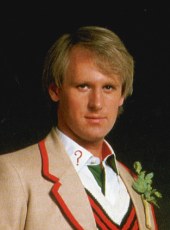 | | The Fifth Doctor |
|
| 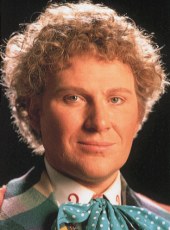 | | The Sixth Doctor |
| | | | |
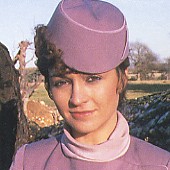 | | Tegan Jovanka |
| 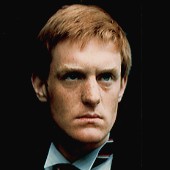 | | Turlough |
| 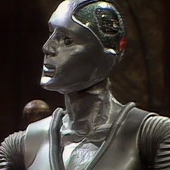 | | Kamelion |
| | | | |  | | Peri |
| 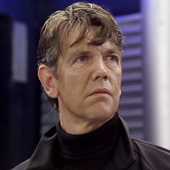 | | Lytton |
| 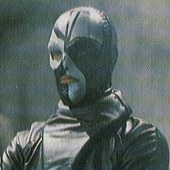 | | Sharaz Jek |
| | | | |
|
On Release| |  | | The Collection Season 21 Limited Edition Blu-Ray Cover |

VIDEO |
| | | | | |
Magazines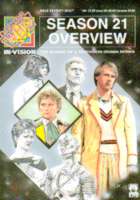 | | Doctor Who CMS Magazine (In Vision): Issue 78: Season 21 Overview |
|  | | Doctor Who Magazine - Episode Guide: Issue 120 |
|  | | Doctor Who Magazine - Episode Guide: Issue 159 |
| 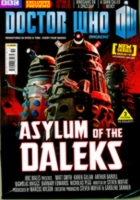 | | Doctor Who Magazine - Countdown to 50: Issue 451 |
| | | | |
|
|
|
| |
| |
|
| |
| |
|
| Doctor Who is the copyright of the British Broadcasting
Corporation. No infringements intended. This site is not endorsed by the BBC or
any representatives thereof. |
|